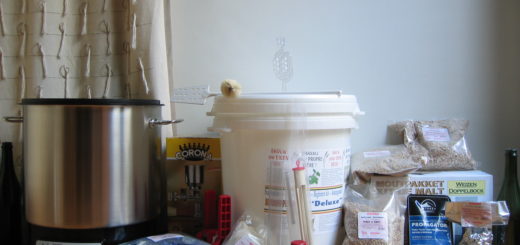Words Pale in Comparison
It’s important to understand that the terms used to describe a beer’s flavor and character profile are really very poor alternatives to tasting it yourself. For instance, one person might describe a particular brew as having mild citrus overtones but that really doesn’t tell you much. Does it mean that there’s a hint of lemon? Does the beer taste like oranges?
The terms used to describe a beer are hard to pin down unless you have a point of reference in your own experience. The best option here is to conduct your own taste testing with some beers with easily identifiable qualities and characteristics.
Beer Tastings Increasing
The good news for beer lovers is that an increasing number of breweries and pubs are holding tastings. These make for excellent options if you want to develop your understanding of what goes into making a beer’s flavor. You will find that these are excellent places to learn from others, compare notes and learn what you are looking for in a beer’s taste before you drink it.
Quite a few pubs and brewers are holding tastings during which the host will describe the flavor character of the beer beforehand. Often, the host will also be available for questions from burgeoning tasters during and after the tasting. You will even find tasting classes out there, but these are still a bit rare outside of major metropolitan areas.
If you find that you have no options nearby to attend a tasting, you can actually buy some pretty decent tasting guides and do your own analysis for the various beer types listed in the guide. That might be a great excuse to get some friends together to explore some of the options available to you in the realm of beer.
Look for Clues
If you’re new to tasting beer, a few helpful pointers will get you going in the right direction. One of the most important clues you’ll have is the beer’s color. While you can’t always pin a beer’s taste on its coloration, it usually does have a lot to do with it. For instance, very dark beers usually have a heavier malt taste than lighter beers, while lighter beers are often more hoppy in nature.
Another clue is the amount of visible carbonation in the beer. Staring at the bubbles rising from the bottom isn’t a good indicator of carbonation, though. You need to look toward the head. Good head retention and “lacing” as the head subsides are excellent indicators that a beer has plenty of carbonation. Too little carbonation results in a “flat” or stale taste. Too much carbonation is not a good thing either.
Getting to the Meat of the Matter
All beers have two main components when it comes to flavor – bitter and sweet. The bitter usually comes from the hops (particularly from bittering hops). The sweetness is usually from the malt used, though there can be many other things that increase the sweet and bitterness of a particular beer (additives, flavorings, etc.).
If a beer is defined as being “hoppy”, it is usually relatively bitter with lots of plant-like flavor from the hops used. Bitter hops give beer its bite while aromatic hops give it a “grassy” aroma and flavor. Malty beers usually have a sweetish flavor. Heavier roasts to the malt will color the beer darker but also impart a roasted flavor to the finished brew as well. Malty beer can also have an “earthy” flavor.
The flavor of your beer is not all about what your mouth experiences, though. The aroma of the brew also goes a long way in creating what your brain ultimately decides is “flavor”. Quite a few factors go into creating a beer’s aroma, including any additives (fruit extracts, etc.) that are used, the type of hops used and the type and roast of the malt in the brew.
Mouthfeel is another important consideration that goes into the drinking experience. The best way to get a good idea of what mouthfeel is all about is to drink a good stout or robust porter and then compare it to something like a pale ale. You will find that the stout has a very “smooth” feel in your mouth while the pale ale will be lighter in body.
The final part of the equation is the “finish” or the aftertaste left by the beer. Different styles will have different finishes. Some will last for quite some time while others will begin to fade almost immediately. Some beers even have a completely different finish than their original taste while you are drinking them.
As a note, when you hear someone saying a beer has a particular “odor” it refers to an unwanted quality of the beer. Odors are usually caused by something going wrong in the brewing process or by the beer being too old and becoming “skunky”. Sulfur, vegetables, oil and chlorine are all terms used to describe odors found in beer that’s either been brewed incorrectly or has aged past its prime.
Get Out There and Experience It
As mentioned at the beginning, it is very difficult to develop an understanding of beer’s characteristics without experiencing them yourself. If you want to get more involved with beer tasting, find a brewery or pub in your area that offers regular tasting events. You’ll find quite a few options, particularly with craft breweries. In addition, attending this type of event can help you learn from those with more experience and really develop your palate.
Poto Cervesia,
Dustin Canestorp




My company , Luxury Bath of Richmond , is interested in being a vendor at this years event in August.…
There will be a number of breweries there with some awesome brews! Isley Brewing Company– Choosey Mother Porter, Legend Brewing…
what brews will they have at the event ???
Thank You for this.
This is good. Thanks!